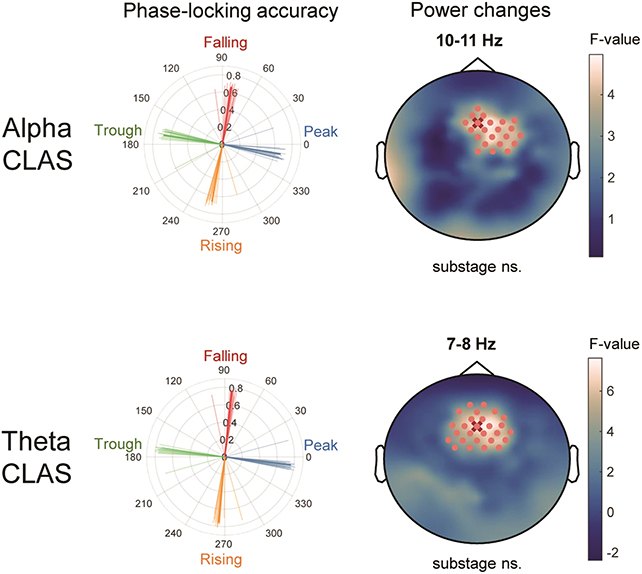Scientists in the UK have manipulated two prominant types of brain wave while volunteers slept, in an effort to develop better tools to study critical neurological activities.
The waves, referred to as alpha and theta oscillations, are strongly associated with resting and relaxing states, including the Rapid Eye Movement (REM) stage of unconsciousness.
Named for the jerking motion of our eyes while in this stage of sleep, REM coincides with the appearance of our most vivid dreams. The stage is also considered to play an important role in memory consolidation and honing cognition, making any brain wave activity an attractive target for scientists.
"Brain oscillations assist in the working of the brain and how it learns and retains information," says neuroscientist Valeria Jaramillo, from the University of Surrey.
"Brain oscillations during REM sleep have been implicated in memory functions – however, their exact role remains largely unclear."
A process called closed-loop auditory stimulation (CLAS) has been successfully used to enhance or disrupt brain waves in non-REM sleep, precisely targeting the ebb and flow of brain waves via sounds delivered through headphones.
The process had rarely been applied to sleepers outside of this state, so researchers from the University of Surrey tested the method on volunteers to determine if it might also apply to waves produced during REM.

In tests involving 18 participants, the researchers changed both the speed and strength of the brain waves as measured through electrodes on the skull.
Alpha (around 8 to 12 Hertz) and theta (around 4 to 8 Hertz) oscillations typically flow through the brain's frontal region while we're in a relaxed state, such as when we're dozing or deciding whether to get out of bed to start the day.
In fact, these brain waves are pretty similar whether we're awake or in REM sleep. We know that brain waves, pulses of electrical activity triggered by neurons, help in the healthy functioning of the brain. If we can control them to an extent, that's potentially helpful in making sure the brain is working as it should – and in slowing the rate of degeneration associated with dementia.
"Using sound stimulation to change brain oscillations whilst a person sleeps shows therapeutic promise," says University of Surrey neuroscientist Ines Violante.
"There is currently no cure for dementia, only medication that can slow down disease progression or temporarily help a person with their symptoms, so it is important that we think innovatively to develop new treatment options."
A lot more research will be needed to show this can actually have a therapeutic effect on dementia, but scientists have already shown that the symptoms of dementia – trouble with memory and cognitive abilities – often coincide with the slowing of brain wave oscillations, which is something we might now be able to influence.
"This could pave the way for a new approach on how to treat patients with dementia, as the technique is non-invasive and undertaken whilst they are asleep, lessening the disruption to their lives and enabling us to be more targeted in our approach," says Derk-Jan Dijk, a professor of sleep and physiology at the University of Surrey.
The research has been published in SLEEP.
